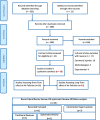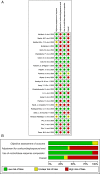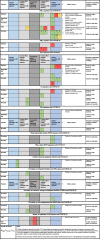Acute and chronic exposure to air pollution in relation with incidence, prevalence, severity and mortality of COVID-19: a rapid systematic review
- PMID: 33838685
- PMCID: PMC8035877
- DOI: 10.1186/s12940-021-00714-1
Acute and chronic exposure to air pollution in relation with incidence, prevalence, severity and mortality of COVID-19: a rapid systematic review
Abstract
Background: Air pollution is one of the world's leading mortality risk factors contributing to seven million deaths annually. COVID-19 pandemic has claimed about one million deaths in less than a year. However, it is unclear whether exposure to acute and chronic air pollution influences the COVID-19 epidemiologic curve.
Methods: We searched for relevant studies listed in six electronic databases between December 2019 and September 2020. We applied no language or publication status limits. Studies presented as original articles, studies that assessed risk, incidence, prevalence, or lethality of COVID-19 in relation with exposure to either short-term or long-term exposure to ambient air pollution were included. All patients regardless of age, sex and location diagnosed as having COVID-19 of any severity were taken into consideration. We synthesised results using harvest plots based on effect direction.
Results: Included studies were cross-sectional (n = 10), retrospective cohorts (n = 9), ecological (n = 6 of which two were time-series) and hypothesis (n = 1). Of these studies, 52 and 48% assessed the effect of short-term and long-term pollutant exposure, respectively and one evaluated both. Pollutants mostly studied were PM2.5 (64%), NO2 (50%), PM10 (43%) and O3 (29%) for acute effects and PM2.5 (85%), NO2 (39%) and O3 (23%) then PM10 (15%) for chronic effects. Most assessed COVID-19 outcomes were incidence and mortality rate. Acutely, pollutants independently associated with COVID-19 incidence and mortality were first PM2.5 then PM10, NO2 and O3 (only for incident cases). Chronically, similar relationships were found for PM2.5 and NO2. High overall risk of bias judgments (86 and 39% in short-term and long-term exposure studies, respectively) was predominantly due to a failure to adjust aggregated data for important confounders, and to a lesser extent because of a lack of comparative analysis.
Conclusion: The body of evidence indicates that both acute and chronic exposure to air pollution can affect COVID-19 epidemiology. The evidence is unclear for acute exposure due to a higher level of bias in existing studies as compared to moderate evidence with chronic exposure. Public health interventions that help minimize anthropogenic pollutant source and socio-economic injustice/disparities may reduce the planetary threat posed by both COVID-19 and air pollution pandemics.
Keywords: Burden; Lethality; Long-term air pollution; SARS-CoV-2; Short-term; Susceptibility.
Conflict of interest statement
Authors declare no conflict of interest.
Figures





Similar articles
-
Mortality and Morbidity Effects of Long-Term Exposure to Low-Level PM2.5, BC, NO2, and O3: An Analysis of European Cohorts in the ELAPSE Project.Res Rep Health Eff Inst. 2021 Sep;2021(208):1-127. Res Rep Health Eff Inst. 2021. PMID: 36106702 Free PMC article.
-
Air Pollution in Relation to COVID-19 Morbidity and Mortality: A Large Population-Based Cohort Study in Catalonia, Spain (COVAIR-CAT).Res Rep Health Eff Inst. 2024 Sep;2024(220):1-48. Res Rep Health Eff Inst. 2024. PMID: 39468856 Free PMC article.
-
Effect of environmental pollutants particulate matter (PM2.5, PM10), nitrogen dioxide (NO2), sulfur dioxide (SO2), carbon monoxide (NO) and ground level ozone (O3) on epilepsy.BMC Neurol. 2025 Apr 1;25(1):133. doi: 10.1186/s12883-025-04142-3. BMC Neurol. 2025. PMID: 40169939 Free PMC article.
-
Assessing Adverse Health Effects of Long-Term Exposure to Low Levels of Ambient Air Pollution: Implementation of Causal Inference Methods.Res Rep Health Eff Inst. 2022 Jan;2022(211):1-56. Res Rep Health Eff Inst. 2022. PMID: 36193708 Free PMC article. Review.
-
Association between exposure to ambient air pollution and hospital admission, incidence, and mortality of stroke: an updated systematic review and meta-analysis of more than 23 million participants.Environ Health Prev Med. 2021 Jan 26;26(1):15. doi: 10.1186/s12199-021-00937-1. Environ Health Prev Med. 2021. PMID: 33499804 Free PMC article.
Cited by
-
Long-term air pollution and COVID-19 mortality rates in California: Findings from the Spring/Summer and Winter surges of COVID-19.Environ Pollut. 2022 Jan 1;292(Pt B):118396. doi: 10.1016/j.envpol.2021.118396. Epub 2021 Oct 21. Environ Pollut. 2022. PMID: 34688723 Free PMC article.
-
Association between long-term exposure to ambient air pollution and COVID-19 severity: a prospective cohort study.CMAJ. 2022 May 24;194(20):E693-E700. doi: 10.1503/cmaj.220068. CMAJ. 2022. PMID: 35609912 Free PMC article.
-
Prepared for the polycrisis? The need for complexity science and systems thinking to address global and national evidence gaps.BMJ Glob Health. 2024 Sep 11;9(9):e014887. doi: 10.1136/bmjgh-2023-014887. BMJ Glob Health. 2024. PMID: 39266018 Free PMC article. Review.
-
Modulation of COVID-19 incidence by environmental stressors is variant between pre-Omicron and Omicron periods.Sci Rep. 2025 Jul 29;15(1):27636. doi: 10.1038/s41598-025-13521-2. Sci Rep. 2025. PMID: 40730861 Free PMC article.
-
Exploring the association between ambient air pollution and COVID-19 risk: A comprehensive meta-analysis with meta-regression modelling.Heliyon. 2024 Jun 6;10(12):e32385. doi: 10.1016/j.heliyon.2024.e32385. eCollection 2024 Jun 30. Heliyon. 2024. PMID: 39183866 Free PMC article.
References
-
- Niger: WHO Coronavirus Disease (COVID-19) Dashboard [Internet]. [cited 2020 Nov 25]. Available from: https://covid19.who.int
Publication types
MeSH terms
Substances
Associated data
Grants and funding
LinkOut - more resources
Full Text Sources
Other Literature Sources
Medical
Miscellaneous

